If you’ve used a MacBook Pro or MacBook over the last couple of years then what we’ll be looking at in this review of the Apple Magic Trackpad is old news. We say that because the technology is the same.Apple introduced their new Magic Trackpad today to significant buzz; the product’s concept had been leaked as early as late 2009 and FCC documents recently confirmed its existence. The Magic Trackpad is cheap enough for most Apple customers to consider but expensive enough to make you think twice……
When I was 12, using a Performa 600CD, my parents gave me an external trackpad accessory that connected via ADB (a moment of silence for Apple Desktop Bus, please… thank you) for my birthday. The useable surface area was tiny—maybe three-quarters the size of a 3.5″ floppy—and clunky, but I thought it was the coolest thing ever… for about five minutes. I soon learned that tracking around your desktop computer to play Oregon Trail and put together school projects in Microsoft Word 6.0 was Serious Business, and the trackpad wasn’t cutting it for me. The small surface was annoying, and the precision even worse. I eventually disconnected it and went back to my trusty mouse.
Seventeen years later, I find myself splitting my time between a 27″ iMac and a 13″ MacBook Pro; instead of Word 6.0, I deal with MacJournal and the Ars CMS, and instead of Oregon Trail, I play various online Scrabble knockoffs. I use a Magic Mouse and the multitouch trackpad that is built into my MacBook Pro. I constantly find myself trying to perform multitouch gestures—ones that only work on Apple’s trackpad—on the mouse, and find myself regularly wishing for a better input device on my desktop.
When Apple introduced the Magic Trackpad, a standalone Bluetooth trackpad designed for use with Apple’s desktop machines, I was cautiously optimistic. My previous dalliance in trackpad-on-desktop land ended poorly, but a lot has changed in a couple decades
Apple’s Magic Trackpad isn’t the first of its kind — in fact, Wacom has been playing this game for awhile — but it’s the first of its kind from the cats in Cupertino, so obviously people take notice. The premise of such a device is stupidly simple: it’s a laptop trackpad that lives on your desktop. Over the past few years, there have been rumors that Steve Jobs has his sights set on eliminating buttons from Apple products altogether, and this certainly feels like the next step in the plan.
There’s not much in the box besides the trackpad and a manual. The enclosure is made of aluminum with a thin layer of glass on the tracking surface, though you wouldn’t know it from the touch. The Magic Trackpad is designed to mirror the functionality and feel of the trackpads built into Apple’s MacBook Pros, but to look like a partner to Apple’s Wireless Keyboard. The top and bottom align with the keyboard perfectly, and they match each other aesthetically.
The Magic Trackpad isn’t much to look at. That is, there just isn’t much to it from a design perspective. If you’ve seen the standard Apple Bluetooth keyboard, then you should have a pretty good idea of what this device looks like. As with the keyboard, it’s built out of smooth, soft, machined aluminum, with a curved back that gives the device some lift in the rear. The surface of the pad is… well, just pad. The front face is the same smooth glass that you’ve come to know on the MacBook and MacBook Pro trackpads, and just as with the newest generation of those laptops, the Magic Trackpad provides a single clickable button — its entire tracking area. As usual, the construction of the device feels rock solid, and it’s certainly handsome to look at. The bottom, plastic section of the pad is protected by small rubber feet, and the battery compartment is accessible through the rounded bit at the rear of the device, as is the power / Bluetooth discover button.
The device is considerably larger than Apple’s laptop offerings, of course, measuring 5.17 inches long by 5.12 inches wide, giving you a surface area of around 22 square inches (we’re subtracting that band at the top). That sounds like it should be a plus, but in execution in almost feels like too much space. Sensitivity and speed for getting around is fine, but often I found myself getting “lost” on the pad when performing more complex gestures like pinch-to-zoom. It’s not a dealbreaker, but it takes some getting used to if you’re coming off of a MacBook or MacBook Pro.
Inside, you’ve got space for two AA batteries (we’re sure Apple would love for you to use its new rechargeable variety), and there’s a Bluetooth radio onboard (2.1, presumably), allowing quick and simple connections to most systems. As you would expect, the trackpad is multitouch and responds to gestures using up to four fingers, though the trackpad registered far more touch points in my testing, even up to all ten of my fingers (tested using the third party Better Touch Tool).
Since the device is Bluetooth, it’s battery powered and comes with two AAs out of the box. The bottom of the device is a white plastic, with two feet on the lower edge that facilitate clicking.The trackpad’s usable surface area is about 5.2″ wide by 4.3″ deep, but if you include the battery area at the top, it’s a 5.2″ square. This makes the surface about 80 percent larger than the largest MacBook Pro trackpad, according to Apple’s claims.
The Magic Trackpad can be set up for use on Mac OS X (10.6.4 or later) on either a portable or desktop machine, though it makes no sense as to why you would want to use it with a notebook. It can also be used under Windows with some, but not all multitouch gesture support. The gestures are the main attraction, though, so the only reason we can see to use it under Windows is if you already have it installed on your Mac and you’re dual-booting into Windows for some other reason.
On a Mac, there isn’t going to be a steep learning curve here if you’ve got a relatively current laptop. The software which controls and allows you to customize the Magic Trackpad is functionally identical to the trackpad preference pane in OS X. The only notable difference is that Apple has added an additional gesture — a three finger move that allows you to move windows around or drag objects, though you lose the ability to navigate through photos or files with a swipe. I would have liked to see an option for a modifier key to toggle these behaviors, but as it stands right now, it’s one or the other.
Besides that very minor addition, you’re left with standard Apple trackpad gestures, which include one, two, three, and four finger swipes, as well as multiple combos of tapping, double-tapping, and holding / tapping. As I said, the extra surface area on the pad doesn’t always help out when you’re trying to work quickly. I honestly might have preferred something a little closer in size to my laptop’s pad.
Once you have it all set up to your liking, off you go! If you are already familiar with the multitouch gestures that work on Apple’s notebook line, then using them on the Magic Trackpad works exactly the same way. The two that I’m most addicted to are two-finger scroll and four-finger swipe up and down to expose the desktop. I’m also a huge fan of the two-finger right click (which, it turns out, some MacBook Pro owners still don’t know about—but they should!).
Other people like the four-finger swipe left and right to switch apps, but I like to use the keyboard command (command + tab) for that. There’s also the trusty three-finger swipe to navigate—for example, you can swipe left with three fingers in Safari to go back to the previous page, and right to go forward again—but again, I like the keyboard commands better.
As you can see from the above screenshot, I had to uncheck “Pinch Open & Close.” This gesture is similar to the pinch and zoom you would do on an iPhone, and is useful for zooming in on photos or PDFs. However, once I installed the Magic Trackpad on my iMac, I found myself accidentally blowing up or shrinking the text oneverything I touched via the pinch and zoom gestures. Browser windows, my writing in MacJournal—you name it, I’ve accidentally changed the text size via the trackpad. This is undoubtedly due to my tendency to rest my thumb at the bottom of the trackpad—normally this doesn’t affect any of your other touches or gestures, but itdoes help to trigger the pinch gesture if your other (probably pointer) finger is doing just the right thing. For some reason, though, this is a nonexistent problem for me on my MacBook Pro, even though I rest my thumb at the bottom of the trackpad there as well.
My issues with trackpads aside, using the Magic Trackpad was a fairly enjoyable experience, and while I can’t personally envision a time when I completely set aside my mouse in favor of this kind of device, I think it’s going to please a lot of people who’ve been looking for a mouseless experience in a desktop setting. Still, it would have been nice to see Apple go further with functionality on this, possibly following Wacom’s lead and including a stylus to allow for other varieties of interaction with the device. We know that Steve is staunchly against styli, but here’s a scenario where the marriage of touch and pen input works flawlessly.
I couldn’t help but think how amazing of an input device this would make for something like that new Apple TV we’ve been hearing about. In fact, one of the best uses I found for the Magic Trackpad was as a control surface for my HTPC setup. Normally I use something called Air Mouse on my iPhone to control the Mac Mini I have connected to my TV — but the Magic Trackpad did excellent stand-in work for it during my testing. Of course, there’s no keyboard here, and having two devices on the sofa of considerable size isn’t exactly ideal, so it doesn’t solve every problem.
There were some other downsides to using the Magic Trackpad over a mouse on my iMac—most notably related to precision. Users who do a lot of work in Photoshop and other image editing software already shun trackpads for this reason (Ars Creative Director Aurich Lawson made sure to point this out to me as I was writing this), and although I no longer do that kind of work, editing articles for my fellow writers here at Ars was a slower and slightly more painstaking activity thanks to the trackpad.
Admittedly, this is a nitpicky complaint—I’m only gaining fractions of a second when dealing with text with a mouse—but it was enough to register on my Annoy-o-Meter. And, to be fair, I do experience this when working on my MacBook Pro, so it’s not a new feeling, but it is part of the reason why I split my time between the two computers.
In order to get the device to be as thin as it is, Apple had to engineer out simple disassembly methods; the surface glass, capacitive touch layer, and logic board are all held together with copious amounts of adhesive. iFixit noted that even the tiny ribbon cables are so thin that they could be easily damaged in an attempt at self-repair, and the logic board has four direct solder connections to some components.
Despite this, iFixit did find several interesting details. The Magic Trackpad shares the same Broadcom Bluetooth and touch controller chips used in other Apple products. It also uses a novel method to make the whole surface clickable, like its notebook brethren. When pushing down on the top surface, two rubber feet at the front bottom of the device push up against a plate inside, which in turn triggers an electronic switch. And iFixit marveled at the square threads used on the battery cover. “While square threads have the highest mechanical efficiency of all lead screws, their difficulty of manufacturing makes them prohibitive for most applications,” the company wrote in its teardown notes.
I’ve mainly focused on Mac use, but the Magic Trackpad is also compatible with Windows XP, Vista, and 7 systems. You can get around well enough with the device on your PC, but it doesn’t support anything beyond two-finger gestures like horizontal and vertical scrolling. Basically, most of the charm of the device is lost in the Windows universe, so I can’t say I’d recommend it. One other note, if you’re dual-booting you’ve got to use the most recent version of Boot Camp to utilize the full features of the pad, so be prepared to upgrade if you haven’t yet (and that means having Snow Leopard on your system).
What You Need To Know:
- Think of this Trackpad as the giant wireless version of the Macbook Pro’s touchpad.
- It’s intended to be used for desktops and is pretty easy to set up.
- It runs on Mac OSX Snow Leopard and the latest software update.
- The Trackpad connects to your Mac via Bluetooth, then it’s ready to go.
- The entire surface is one button, but you can use multi-touch swipe features to do things like scroll, pinch and zoom, and switch applications.
- Compared to a mouse, it’s quite responsive and works great for web browsing.
- You can use 2 fingers on the Trackpad to scroll on both axes.
- You can also pinch and zoom by splitting your fingers.
- Swiping three fingers allows you to move back and forth across pages.
- It takes some time to get used to: to click and drag clips, you have to keep one finger down while you drag the other.
- You can scrub through footage by using 2 fingers.
- It’s still not as easy as using a mouse.
- We’re not really sure why you’d want to use this in place of a mouse for gaming.
- It’s okay, but you’ll never get the same responsiveness that you would get with a gaming mouse.
- You’d have to practice a lot to make it work for gaming.
The ability to perform multitouch gestures on my desktop Mac is welcome. The less precise nature of using a trackpad instead of a mouse is not so fun sometimes—it’s tolerable, but annoying. Apple’s design is, of course, sleek and well-done, so at least the device is large enough to be useable without being too large. At least half of my childhood complaints about a trackpad on a desktop were addressed with the Magic Trackpad, though the addition of multitouch gestures do push it over into favorable territory for me.
There isn’t anything truly magical, revolutionary, or groundbreaking about the Magic Trackpad. It’s not the first of its kind, and it doesn’t turn our current computing paradigms on their ear. It’s an excellent device for those who prefer touch input to mouse or trackball, and it’s a solidly built piece of gear that will compliment the uncluttered workspaces of lots of geeks out there. But it’s not a game changer or the death knell for our modern day method of interacting with our PCs as some have speculated.
In all, at the $69 price tag it’s difficult to call something like this a must-have — it’s a niche product for a niche user. It’s easy to see that touch input is increasingly becoming an important part of how we interact with technology and the Magic Trackpad does a admirable job of transmuting that experience to the desktop. But at least for this editor, you’ll have to pry the mouse out of my cold, dead hands.
Resources :arstechnica.com,engadget.com,g4tv.com

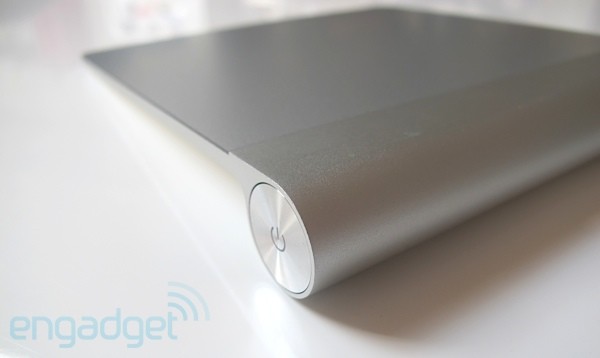
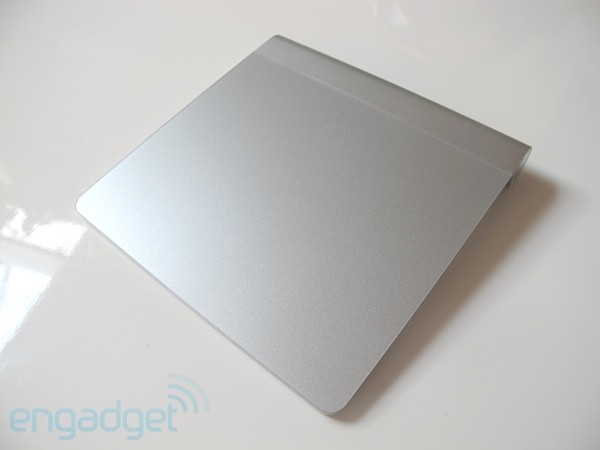
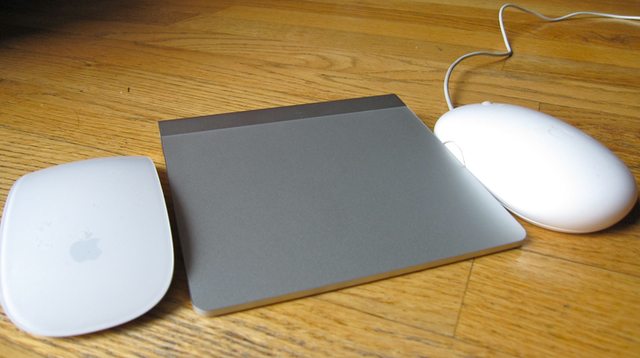
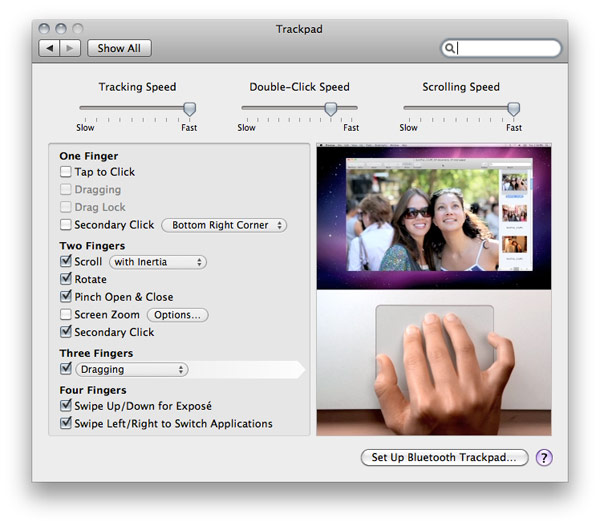

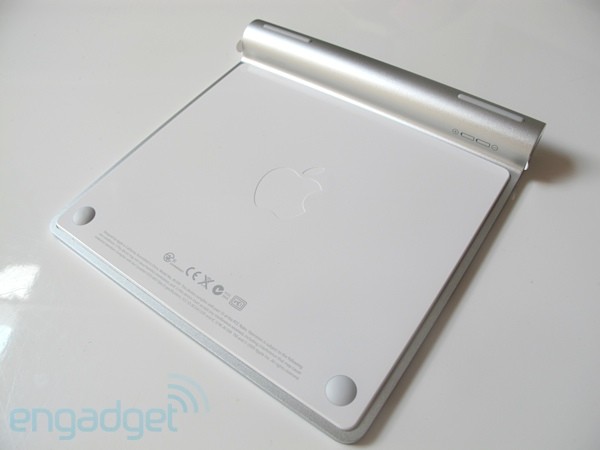
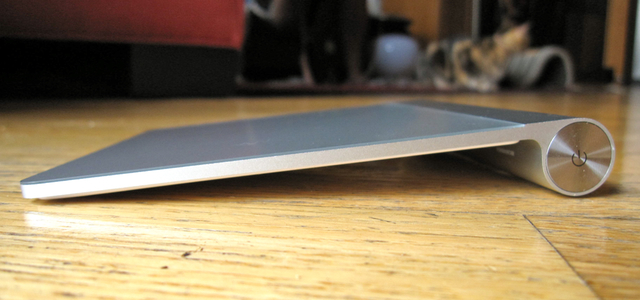
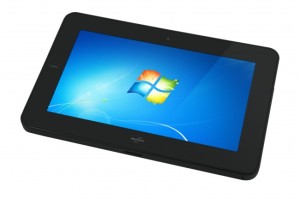
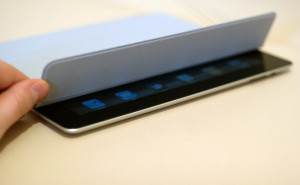
That trackpad looks great! The design is also good.
Definitely awesome!
Pingback: hrefdg
That’s very informative post. Nice to read this. At first I was a little on installing this apprehensive on my new laptop. but after I installed it, and told the computer to reconnect to the mouse, it works a treat, all functions of the mouse works fine on my PC. thank you!